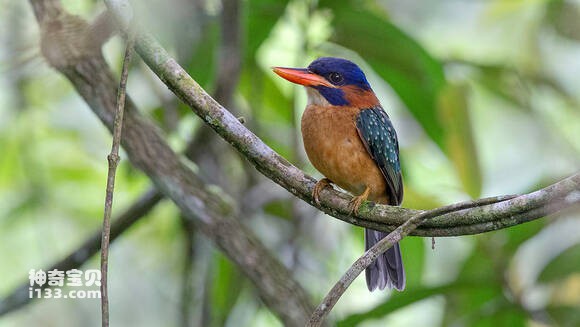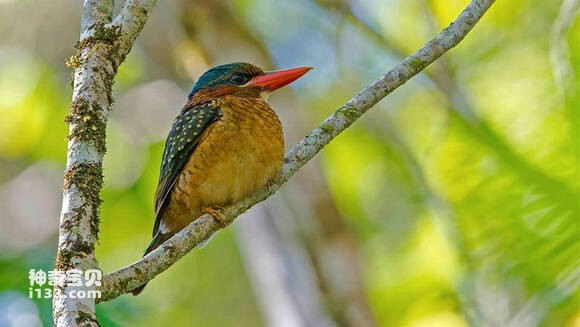Actenoides hombroni
IUCN
LCBasic Information
Scientific classification
- name:Actenoides hombroni
- Scientific Name:Actenoides hombroni,Blue-capped Kingfisher,Hombron's kingfisher
- Outline:Climbing birds
- Family:
Vital signs
- length:About 27 cm
- Weight:106-147g
- lifetime:No textual research information is available
Feature
The feathers on the head are like a blue-purple hat
Distribution and Habitat
Blue-topped jadeite is found in the Pacific Islands (including Taiwan Province of China, Dongsha Islands, Paracel Islands, Zhongsha Islands, Nansha Islands and the Philippines, Brunei, Malaysia, Singapore, Indonesia's Sumatra, Java Island, and Papua New Guinea).
Blue-topped jadeite is generally found in mountainous areas between 1000 and 2000 meters above sea level. It usually lives in the forests of dense tropical rainforests.
Appearance
The blue-topped jade is 27 cm long, the female bird weighs 108-124 g, and the male bird weighs 106-147 g. The feathers on the head resemble a blue-purple hat, with blue lines running from the base of the eyes to the neck. It has an oval purple-blue whiskers and a white throat and chin. His cheeks are reddish orange. The neck feathers and upper and lower shoulder blades are set with bluish-purple, and the overlying wings show a bluish-green tone with fine mottled black spots. The lower back, the tail is bright sky blue, and the tail is cobalt blue. The chest, abdomen and tail of the lower body are orange. The beak is red, the tip of the beak is mixed with dark brown, and the iris is dark brown. Leg color brown and dark olive.
The most obvious hermaphroditism is in the head. The female has an old green forehead and dark red eyes first. The whiskers are orange-red with slight green spots. Young birds resemble adults, but have slightly darker feathers.
The mouth is thick and long lik
Details
The Blue-capped emerald Actenoides hombroni, also known as Blue-capped Kingfisher and Hombron's kingfisher, is endemic to the Philippines.

Blue-topped jadeite hunt alone or in pairs. Like most forest kingfishers, they are completely carnivorous. Often searching for prey in leaves or dirt. The main diet is invertebrates such as crickets, spiders, scorpions, and snails. It also eats small vertebrates such as small fish, small snakes and lizards.

Until about the 1970s, blue-topped jadeite was quite common in the area. Extensive deforestation over the past three decades has fragmented the habitat and the species has declined in large numbers.
Blue top emerald nest on the earth cliff or river dyke, with the mouth digging tunnel type cave for the nest, 60 cm deep, 20 cm wide, 10 cm high long, oval. These caves are generally bare of bedding. The eggs are laid directly on the nest ground. Some also drill holes in tree trunks for nests. Oval, pure white, about 29.4×26.2 mm in size.
Listed in the International Union for Conservation of Nature (IUCN) ver 3.1:2008 Red List of Birds: Vulnerable.
Protect wild animals and eliminate wild meat.
Maintaining ecological balance is everyone's responsibility!








